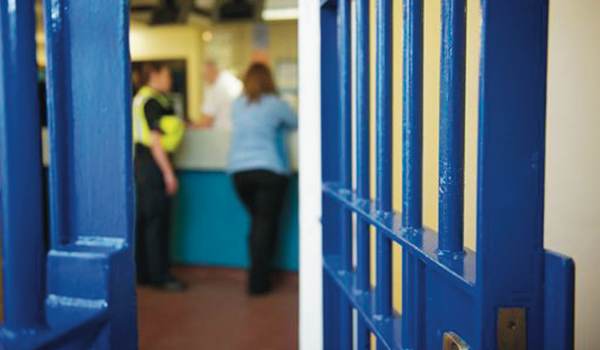Shared endeavours
On her last day as HM Chief Inspector of Constabulary in Scotland, Gill Imery QPM reflects back on her four years in office.
Policing in Scotland is in a far better place today than when I took up this post in April 2018. The improvement is even more clear looking back to when I first arrived at the Inspectorate in 2016 as the Assistant Inspector of Constabulary.
It is difficult to overstate the intensity of public, media, and political scrutiny of Police Scotland and the Scottish Police Authority in the years immediately following the introduction of national arrangements in 2013: barely a day went by without some form of controversy or negative headline.
Both Police Scotland and the Scottish Police Authority experienced turbulence in senior leadership during the early years. The Police and Fire Reform (Scotland) Act 2012 established sound governance arrangements in the form of an independent police authority with a clear remit, however multiple issues arose from varying interpretations of the legislation and how it should be implemented. HMICS reported on this in September 2019.
Since then, the situation has stabilised and key stakeholders including Police Scotland, the Scottish Police Authority, the Scottish Government, Audit Scotland, the Police Investigations and Review Commissioner, and HMICS, have developed professional relationships that understand and respect each other’s roles. The Scottish Parliament continues to take an active interest in policing, however it is now asserted in the wider context of criminal justice, which I consider to be a positive step given the interdependencies across the system.
Stability and capability emerged and are now established characteristics of policing in Scotland. The way in which Police Scotland and the Scottish Police Authority responded to the pandemic from the early part of 2020, and managed the most significant policing operation ever seen in the UK, namely the United Nations 26th Conference of the Parties(COP26) climate change conference in November 2021, demonstrate the maturity of the national police service and its oversight body.
Throughout periods of change and transition, the one constant is the commitment police officers and police staff show to serving the communities of Scotland. In all of the inspections HMICS has carried out, we have been impressed by the dedication and hard work of police officers and police staff in operational, specialist, and support functions, never more so than during the global pandemic when many did not have the option of working from home.
The motivation for all HMICS inspections is to improve policing for the benefit of the public. Our approach to deciding which areas of policing to inspect has developed over time, most recently extending to an online public survey, letters to stakeholders, one-to-one interviews with key post holders, focus groups, and an analysis of wider trends.
An example of the value inspection can bring lies in the strategic review that I carried out in 2017 into the provision of forensic medical services for victims of rape and sexual crime, which led to the establishment of the Chief Medical Officer’s Taskforce. The Taskforce set out a five-year plan to address the recommendations of the HMICS report, supported by a Scottish Government funding commitment of £11.7 million.
The Forensic Medical Services (Victims of Sexual Offences) (Scotland) Act 2021 comes into force on 1 April 2022. The Act will provide a statutory basis for health boards to provide forensic medical services for victims of sexual offences and will establish a legal framework for access to “self-referral”, so that a person can access healthcare and request a forensic medical examination without first having to make a report to the police. The work of HMICS has ultimately changed the law in Scotland, leading to tangible improvement in the consistency and quality of service provided to people who have experienced this type of trauma.
During 2019 we were thinking about the potential implications of the UK’s exit from the European Union, and observing symptoms of an increasingly polarised social and political context, particularly expressed online, and concluded there could be an increase in hate crime. I decided that HMICS should carry out a thematic inspection into the police response to hate crime, given the impact the quality of that response has on public confidence and community cohesion.
In early 2020 the pandemic struck, and affected everyone’s personal and professional lives in ways that could not have been imagined. Events over the summer of 2020 made scrutiny of the police response to hate crime all the more relevant. A newwave of anti-racism protests had been sparked by the murder of George Floyd by a police officer in America in May 2020.
As the pandemic continued, it became increasingly apparent that existing inequalities were being amplified, and the impact was greater on some groups of society than others. As people began to feel the impact of the virus itself and the restrictions brought in to limit the spread of the infection, it became clear that the public’s main concerns were about health, employment, education, and social care, not policing. That said, the police role was fundamental to supporting the public health measures brought in to reduce the spread of infection and save lives.
Over the same period, HMICS started looking at Police Scotland’s arrangements for developing its leaders through training and continuous professional development. The report was published In September 2020, and found that leadership roles and remits had expanded to include national and functional responsibilities when Police Scotland was introduced, however there had been a lack of investment in leadership training and continuous professional development since 2013.
The report made recommendations that Police Scotland should improve leadership and diversity training as a matter of urgency. In the introduction to the report, I stated the intention to carry out a separate inspection focusing on Police Scotland’s recruitment, retention, development and promotion of people from under-represented groups.
In November 2020, the Independent Review of Complaints Handling, Investigations and Misconduct Issues in Relation to Policing was published. This wide ranging report made 81 recommendations for improvement, including in relation to diversity training, police culture, and the support provided to police officers subjected to hate crime in the course of their duty.
Work resumed on the hate crime report in summer 2020, and continued into 2021.
The murder of Sarah Everard in March 2021 by a serving officer with the Metropolitan police shocked everyone and intensified the focus on police culture generally and attitudes to women in particular. Our report on Police Scotland’s response to hate crime was published in June 2021. We found many positive aspects as well as some areas for improvement.
The HMICS report on recruitment, retention, development and promotion of people from under-represented groups was published in October 2021 at a time of heightened sensitivityand intense public, media, and political interest in the police responses to the challenges of equality, diversity and inclusion. There were many positive findings in that report, and significant progress since the publication of the leadership report in September 2020. Police Scotland had begun rolling out leadership training and diversity training, and continues with work to improve in the areas highlighted in all three of these key HMICS reports: leadership; response to hate crime, and recruitment and development of people from under-represented groups.
One of the areas where significant changes were made to adapt to the pandemic was criminal justice. In September 2020, we published the report of a joint inspection with HM Inspectorate of Prosecutions in Scotland to examine the emergency criminal justice provisions introduced by coronavirus legislation. The pandemic had been a catalyst or an accelerator for changes that were long overdue. The joint inspection would have been enhanced further had there been a scrutiny body for the Scottish Courts and Tribunal Service (SCTS). Unfortunately in Scotland there is no inspectorate for the SCTS, which I believe to be a significant gap in the oversight arrangements for the criminal justice system, which will become more obvious as backlogs and delays increase.
The role of policing is much wider than law enforcement, and Police Scotland has shown commitment to prevention and partnership working. The Police and Fire Reform (Scotland) Act 2012 describes the purpose of policing and includes a specific commitment to improving the wellbeing of people and places, which Police Scotland certainly demonstrated through its contribution to the response to the pandemic. Other examples include the response to drug related deaths, and supporting people in mental health crisis.
In response to a record number of recorded drug related deaths, Police Scotland introduced pilots in different parts of the country where police officers could volunteer to carry Naloxone, an emergency medication that reverses the effects of an opioid overdose. I welcomed this approach by Police Scotland, and support its efforts to intervene and save lives of highly vulnerable people.
Following evaluation of this initiative, Police Scotland announced in February 2022 that all police officers in Scotland will be issued with this emergency treatment for drug overdoses. This shows Police Scotland’s commitment to a fundamental aim of policing – the preservation of life – and is simply the right thing to doPolice Scotland has consistently raised the issue of police officers dealing with people in mental health crisis, and has sought support from the Scottish Police Authority to engage the Scottish Government and other agencies to ensure sufficient resources with the necessary expertise are available to support people.
Various police and partnership initiatives are in place in different parts of the country, which should be the subject of joint inspections. My own view is that Police Scotland is doing as much as it can to intervene effectively, and more scrutiny and accountability is required in other areas of public service such as the National Health Service (NHS), out-of-hours mental health support services, and the Scottish Ambulance Service.
Over the past four years, we have continued to inspect the arrangements for detainees coming into police custody, both the physical conditions in custody centres, and the strategic direction of the custody function within Police Scotland. The statutory responsibility for delivering healthcare to those detained in police custody lies with the NHS, and we know from our inspections that arrangements differ significantly across the country. I have repeatedly raised the need for Healthcare Improvement Scotland to work with HMICS to examine the quality of healthcare provided to members of the public who come into police custody, often with pre-existing health challenges in the form of alcohol or drug dependency and mental health. I am pleased to say that joint work is finally about to commence on a baseline assessment of the current provision, which will inform an onsite joint inspection later in 2022.
During the past four years, we have looked closely at Police Scotland’s change programme, how any savings are identified or capacity created, and how decisions are made about using those savings. Our report on demand analysis and management highlighted the high quality of information Police Scotland now has on the demand for policing service across the country. This understanding of demand needs to be used to make choices about priorities and resources, particularly the optimum balance between police officers and police staff, and we are currently examining this through an inspection of workforce planning.
As well as developing effective processes for gathering demand data, Police Scotland has introduced an outcomes based performance framework. HMICS has consistently said that policing should be assessed on the outcomes it achieves for communities. An arbitrary number of police officers is not a meaningful measure of police effectiveness.During my tenure, I have not sought to introduce the Force Management Statement in Scotland, which is a statutory requirement for all forces in England and Wales, however I do believe it is important for Police Scotland to have reliable and accessible information on current and future demand, assets and resources, and to use this information to inform decision making. HMICS has carried out research with other scrutiny bodies, which showed that continuous improvement is enhanced through the use of pre-inspection specific self-evaluation. We are currently testing a new inspection framework, which has self-evaluation as an important addition to our approach.
In June 2021, we started work on reviewing our corporate plan, inspection framework and methodologies, our internal governance and joint working with other scrutiny bodies. We undertook extensive benchmarking with other scrutiny and improvement bodies to develop proposals for continuous improvement of our approach. We took account of feedback from stakeholders received during regular engagement and consultation. The HMICS new Corporate Plan 2021-2024 was published in February 2022. It sets out strategic objectives and outcomes with a three year plan for delivery. Key features include an enhanced focus on the views of service users and frontline staff, the development of an internal improvement plan, and a move to three year scrutiny planning.
It has been an honour and a privilege to serve as Her Majesty’s Chief Inspector of Constabulary in Scotland for the past four years. Whilst the Inspectorate is an independent scrutiny body, its main purpose is to help improve policing for the benefit of the public, which is clearly a shared endeavour with Police Scotland, the Scottish Police Authority, and the Scottish Government.
I would like to thank all those who have participated in our inspections over the years, and to commend the hard working women and men of Police Scotland and the Scottish Police Authority.
I would like to conclude by thanking the small team at HMICS for all of their efforts to produce meaningful and valuable inspection reports, which really do have the potential to make a difference to policing in Scotland.
Finally, I extend a warm welcome to my successor, Craig Naylor, who I know will continue to use the office of HM Chief Inspector of Constabulary in order to improve policing in Scotland.





